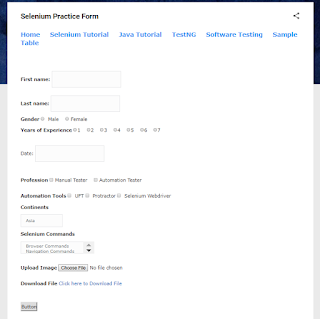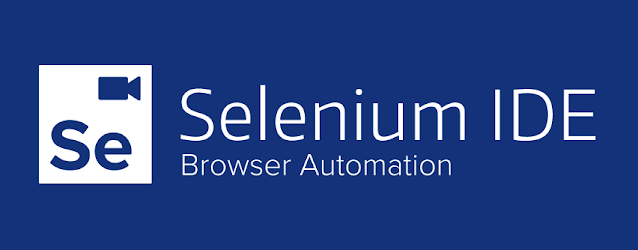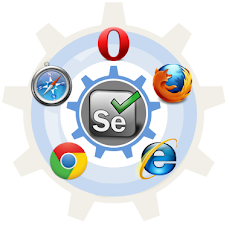Applications of Artificial Intelligence in Healthcare
Artificial Intelligence (AI) is rapidly transforming the healthcare industry, offering innovative solutions to long-standing challenges and ushering in a new era of patient care, diagnosis, and treatment. With the ability to analyze vast amounts of medical data quickly and accurately, AI is improving patient outcomes, streamlining operations, and revolutionizing medical research. In this article, we explore the diverse applications of AI in healthcare.
1. Disease Diagnosis and Early Detection
AI-driven diagnostic tools have demonstrated remarkable capabilities in disease identification and early detection. These systems leverage machine learning algorithms to analyze various medical imaging modalities, such as X-rays, MRIs, and CT scans. By training on vast datasets of images and clinical records, AI models can spot subtle anomalies and patterns that may be challenging for the human eye to detect.
For instance, in the case of radiology, AI algorithms can highlight potential abnormalities, such as tumors, fractures, or lesions, in medical images. This not only assists radiologists in making more accurate and timely diagnoses but also ensures that no critical findings are overlooked. Early detection of diseases like cancer is crucial for improving patient outcomes and increasing survival rates.
Moreover, AI's ability to process and interpret medical images swiftly can help reduce the time patients spend waiting for diagnoses, allowing healthcare professionals to initiate treatment plans sooner.
Example: Imagine a patient who visits a radiology clinic for a chest X-ray. The X-ray image is analyzed by an AI-powered diagnostic system. This AI system, trained on millions of chest X-rays, quickly identifies a tiny abnormality that could be an early sign of lung cancer. The AI flags this finding for the radiologist, who reviews the case and confirms the presence of a small tumor. Thanks to the AI's early detection, the patient's lung cancer is diagnosed at a very treatable stage, significantly improving their chances of recovery.
2. Personalized Treatment Plans
Personalized medicine is a promising frontier in healthcare, and AI plays a pivotal role in making it a reality. AI algorithms can analyze a patient's genetic makeup, medical history, lifestyle, and even data from wearable devices to create tailored treatment plans.
These plans take into account a patient's unique characteristics, predicting which therapies are most likely to be effective and minimizing the risk of adverse reactions. By optimizing treatment strategies, AI not only enhances patient outcomes but also contributes to more efficient resource allocation within the healthcare system.
Example: A patient with diabetes undergoes genetic testing to determine their individual response to insulin and other diabetes medications. AI analyzes the genetic data, along with the patient's medical history and lifestyle factors. Based on this analysis, the AI system recommends a personalized treatment plan. In this case, it suggests a specific type of insulin and dietary modifications tailored to the patient's genetic profile, improving the patient's ability to manage their diabetes effectively.
3. Drug Discovery and Development
Traditional drug discovery and development are costly, time-consuming processes. AI offers a solution to accelerate this journey. AI-driven platforms can analyze vast datasets of biological and chemical information to identify potential drug candidates and predict their interactions with target molecules.
By simulating these interactions in silico, researchers can significantly reduce the number of drug candidates that need to be synthesized and tested in the laboratory, ultimately saving time and resources. AI-powered drug discovery has the potential to expedite the development of treatments for various diseases, including rare and neglected ones.
Example: Pharmaceutical researchers are exploring new treatments for Alzheimer's disease. Using AI, they analyze extensive datasets of protein interactions, chemical structures, and clinical trial data. AI-driven algorithms identify a set of promising compounds that could potentially target the underlying mechanisms of the disease. These compounds are synthesized and tested in the lab, eventually leading to the discovery of a novel drug candidate for Alzheimer's treatment.
4. Virtual Health Assistants
Virtual health assistants are AI-powered chatbots and applications that provide patients with 24/7 access to medical information and support. These virtual assistants can answer health-related questions, offer medication reminders, and monitor patients' vital signs remotely.
This technology improves patient engagement and adherence to treatment plans, especially for chronic conditions. Virtual health assistants can educate patients about their conditions, provide guidance on managing symptoms, and even escalate urgent issues to healthcare professionals when necessary.
As healthcare becomes more patient-centric, virtual health assistants contribute to empowering individuals to take control of their health and well-being. These AI-driven tools are particularly valuable for telemedicine and remote patient monitoring, where regular communication between patients and healthcare providers is essential.
Example: A patient with asthma uses a virtual health assistant app on their smartphone. The app provides information about asthma triggers, medication reminders, and peak flow measurements. If the patient experiences worsening symptoms, the virtual assistant asks questions about their condition and uses AI algorithms to assess the severity. Based on the assessment, the assistant can recommend whether the patient should seek immediate medical attention or adjust their medication regimen.
5. Predictive Analytics for Hospital Operations
Hospitals and healthcare facilities are adopting predictive analytics powered by AI to optimize operations and resource management. Machine learning models analyze historical patient data, admission rates, staff scheduling, and equipment maintenance needs to make accurate forecasts.
By anticipating patient flow and staffing requirements, healthcare providers can allocate resources more efficiently. For instance, predictive analytics can help hospitals adjust staffing levels to meet patient demand, reducing wait times, and ensuring that patients receive timely care.
Additionally, AI-driven analytics enable better inventory management of medical supplies and equipment, reducing costs and minimizing the risk of shortages.
Example: A hospital employs predictive analytics to optimize its resource allocation. The AI system analyzes historical patient admission data, seasonal trends, and staffing levels. During flu season, the AI predicts a surge in patient admissions. As a result, the hospital proactively schedules additional nursing staff and opens temporary flu clinics to handle the increased patient load, ensuring that patients receive prompt care and reducing overcrowding.
6. Remote Patient Monitoring
Remote patient monitoring is a critical component of modern healthcare, particularly for patients with chronic conditions or those recovering from surgeries. AI-enabled monitoring tools use wearable devices and sensors to continuously track patients' vital signs and health metrics, such as heart rate, blood pressure, and glucose levels.
These AI systems can detect anomalies or changes in a patient's condition and alert healthcare professionals in real-time. Early intervention based on these alerts can prevent complications and reduce hospital readmissions, ultimately improving patient outcomes and reducing healthcare costs.
For instance, remote monitoring platforms like Current Health's solution use AI to collect and analyze data from wearable devices, providing valuable insights into patients' health status and facilitating timely interventions when necessary.
Example: An elderly patient with heart disease wears a wearable device equipped with sensors that continuously monitor their heart rate and blood pressure. The device is connected to an AI-powered monitoring platform. If the AI detects irregular heart rhythms or a sudden spike in blood pressure, it alerts the patient's cardiologist and primary care physician immediately. The healthcare team reviews the data remotely and advises the patient on necessary interventions, which could include adjusting medication or scheduling an in-person visit.
7. Medical Records Management
AI simplifies the cumbersome task of managing electronic health records (EHRs) and other healthcare documents. Natural language processing (NLP) algorithms enable AI systems to parse and extract structured information from unstructured medical notes and records.
By automatically extracting relevant data, AI not only makes EHRs more accessible but also reduces the administrative burden on healthcare providers. This enhances the accuracy of clinical documentation and ensures that healthcare professionals have quick access to critical patient information when making treatment decisions.
For example, Google Health's Medical Digital Assistants use NLP to extract valuable information from EHRs, streamlining the documentation process and improving the quality of healthcare records.
Example: A busy hospital emergency room relies on AI-powered medical records management to streamline documentation. When a physician examines a patient, they dictate their findings into a voice recognition system. The AI then converts the spoken words into structured, coded medical notes, which are instantly added to the patient's electronic health record (EHR). This automation ensures that all patient information is accurately recorded, easily accessible, and reduces administrative burdens on healthcare providers.
8. Drug Adverse Event Monitoring
Monitoring the safety of medications and medical devices is a crucial aspect of healthcare. AI systems can analyze vast datasets of patient records, social media discussions, and other sources of real-world data to detect potential adverse events associated with drugs and medical devices.
Regulatory agencies and pharmaceutical companies use AI-driven systems to identify safety concerns early, enabling timely actions such as recalls or label updates. This proactive approach protects patient safety and ensures that healthcare products are continuously monitored for their risk-benefit profiles.
For instance, the FDA's Sentinel System leverages AI and real-world data to monitor the safety of medical products, allowing for rapid response to emerging safety issues and enhancing the overall safety of the healthcare system.
Example: A pharmaceutical company launches a new medication for hypertension. AI-powered systems continuously monitor online health forums, social media platforms, and electronic health records for patient reports of side effects related to the medication. If a pattern of concerning side effects emerges, the AI system alerts the company's pharmacovigilance team. They investigate the reports and, if necessary, take swift action to update warning labels or provide additional guidance to healthcare providers to ensure patient safety.
Conclusion
The applications of AI in healthcare are vast and transformative, encompassing disease diagnosis, personalized treatment, drug discovery, patient engagement, operations optimization, remote monitoring, medical records management, and drug safety monitoring. As AI technologies continue to advance and integrate into healthcare workflows, we can expect even more breakthroughs in improving patient care, increasing the efficiency of healthcare operations, and driving medical research forward.
While AI offers tremendous promise, it also comes with challenges such as data privacy, ethical considerations, and regulatory compliance. Addressing these challenges will be essential to harness the full potential of AI in healthcare and ensure that these innovations benefit patients and healthcare providers alike. In the coming years, AI will continue to play a pivotal role in reshaping the healthcare landscape, ultimately leading to better health outcomes and a healthier society.









.png)










Comments
Post a Comment